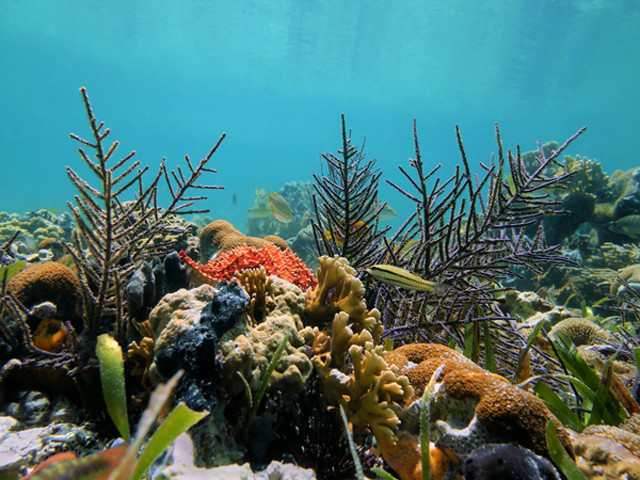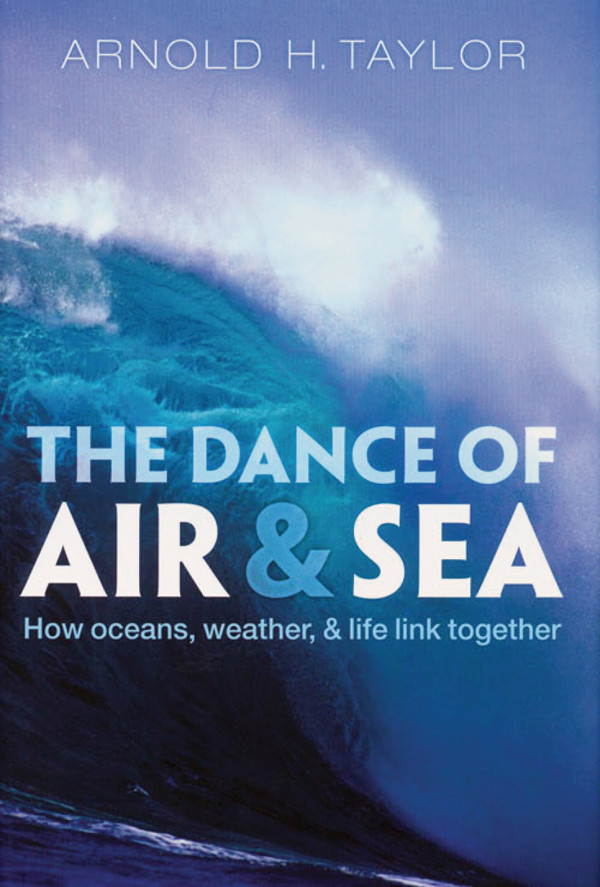
by Thomas Wagner Monday, June 16, 2014

Credit: Copyright Shutterstock.com/Vilainecrevette

"The Dance of Air and Sea: How Oceans, Weather, and Life Link Together," by Arnold H. Taylor, Oxford University Press, 2011, ISBN: 9780199565597.
The planet is a symphony played by the orchestral sections of the atmosphere, hydrosphere, geosphere and biosphere, each of which includes many instruments. However, teasing out the myriad relationships in the concerto that is the earth system is daunting. Not only do the scales involved range from planetary to microscopic, but our observational records are also relatively short, and some features are inherently chaotic. Just understanding the basics of any one of the major components can take a lifetime.
In his new book, “The Dance of Air and Sea: How Oceans, Weather, and Life Link Together,” British oceanographer Arnold H. Taylor takes a stab at explaining how the various components of the Earth symphony act in concert.
The book opens with a ponderous question, which serves as an example for how the book is structured: Zooplankton booms and busts near the British Isles appear to be correlated with the Gulf Stream’s position — but how? Taylor deftly explains the major parts of Earth’s climate system while covering the history of its study through to the contemporary scientific approach.
Overall, the book is a quick tour of the teleconnections of the earth system relayed in a series of charming, accessible essays. Each chapter is about a particular atmospheric or oceanic phenomenon. He opens each with historical scientific events or curious anecdotes related to the phenomena’s discovery — such as Ben Franklin’s study of the Gulf Stream having been driven by his postmaster job. The history gives way to a discussion of contemporary knowledge of the subject, along with implications related to global warming.
Taylor emphasizes the complexity of relationships, and the difficulties of forecasting and prediction. I was entranced by his discussion of Earth’s weather systems, including the easy-to-follow description of the intricacies of Rossby waves. He also explains the main circulation patterns of and connections between the oceans and atmosphere, and discusses how they relate to phenomena such as monsoons and El Niño.
The book does wander somewhat, although the forays lead to some interesting discussions of how natural science is actually carried out, such as finding clever, indirect ways to measure phenomena that are otherwise difficult to observe — for example, using annual rings in perch bones to monitor lake ecosystems.
A champion of long observation records, Taylor routinely points out the important unintended use of these records in establishing our baseline understanding of Earth. Examples range from the intentionally scientific — ocean plankton recording or the Mauna Loa carbon dioxide records — to the accidentally useful — like the corporate records of the Hudson’s Bay Company’s animal fur trade.
The writing is readable with minimal jargon, and the text references plenty of maps and graphs throughout. Extensive notes, a glossary and an index are included. The book is stronger than many popular books about earth systems, and it does not shy away from difficult questions and the sometimes-vague answers. It ends honestly — the professor never solves his query about the plankton around the British Isles.
The reader finishes the book feeling privileged to participate in an interesting journey that continues today. The lessons are summarized in the epilogue with classic British understatement: “The sensitive response of ecosystems to comparatively weak but systematic changes in weather … may be a widespread feature.” Taylor offers some of the best discussion yet of how complex and unpredictable these responses may be.
© 2008-2021. All rights reserved. Any copying, redistribution or retransmission of any of the contents of this service without the expressed written permission of the American Geosciences Institute is expressly prohibited. Click here for all copyright requests.